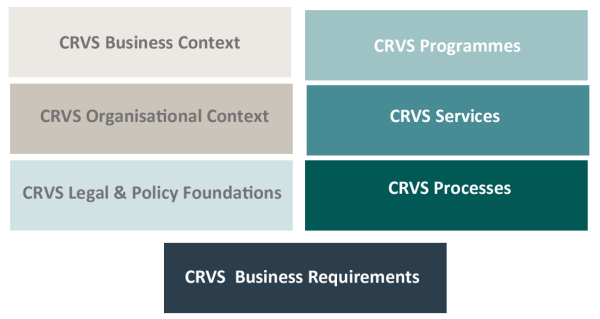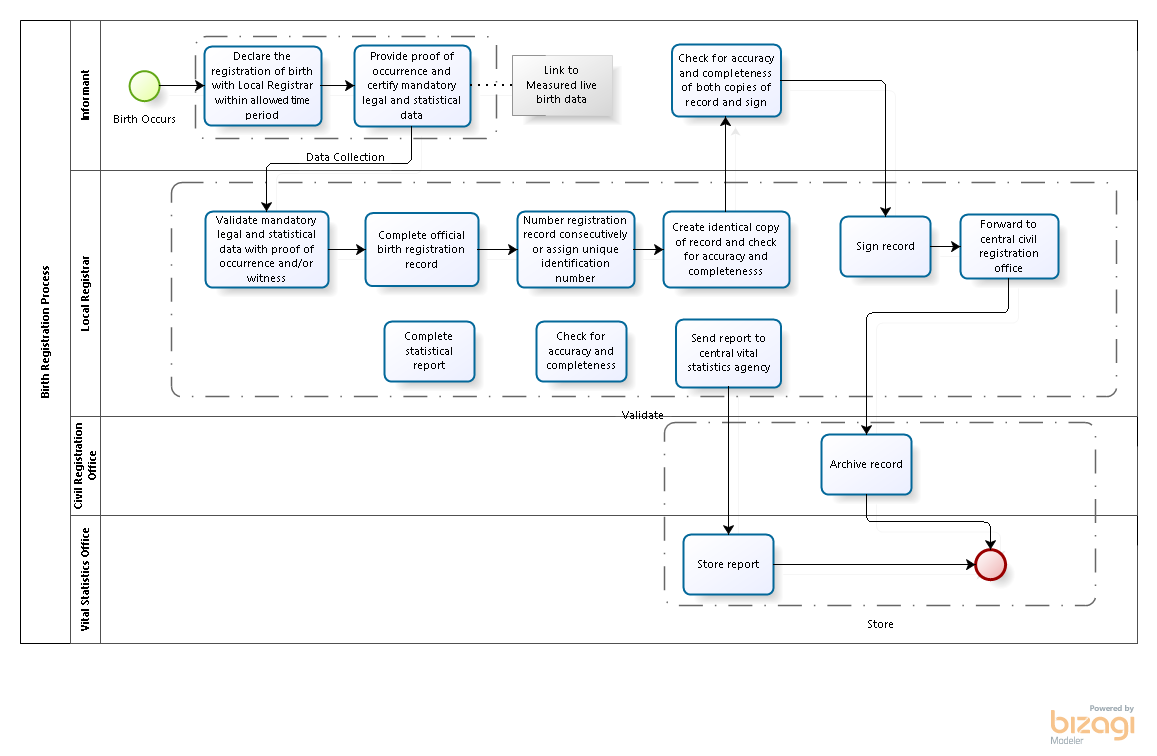Overview
The purpose of defining a Business Architecture is to build a common understanding of the organisation’s purpose, functions and needs in order to guide and manage organisational activities and change. In this context, the organisation comprises those authorities responsible for CRVS. Subsequent steps in the CRVS digitisation process must align with the organisational foundations defined in the Business Architecture e.g. target digitised CRVS systems and processes must meet the business requirements.
Steps:
1
Using the CRVS Business Architecture Template, document your country’s current CRVS Business Architecture, including all the components listed below:

CRVS Business Domain
- Ensure that business processes documented include primary (core), support and management processes.
- Refer to the Country CRVS Business Architecture Examples in the Toolbox to see how other countries have completed this activity.
2
Define your business requirements through consultation with key stakeholders as identified in the RACI Matrix developed in your Project implementation Document. These requirements will be used throughout the Analysis & Design Phase to inform the target digitised CRVS system and processes.
3
For each process identified within your CRVS Business Architecture, document the process using a standard business process modelling technique, as per the example �below�
- Use a business process modelling tool and the Business Process Modelling Guide to develop a visual model of your CRVS processes flow (free business process modelling tools are available e.g. Bizagi).
- For each of the business processes modelled, document additional information for each step as shown in the CRVS Business Process Modelling Guide.
- Refer to the Country CRVS Business Process Examples to see how other countries have completed this activity.








